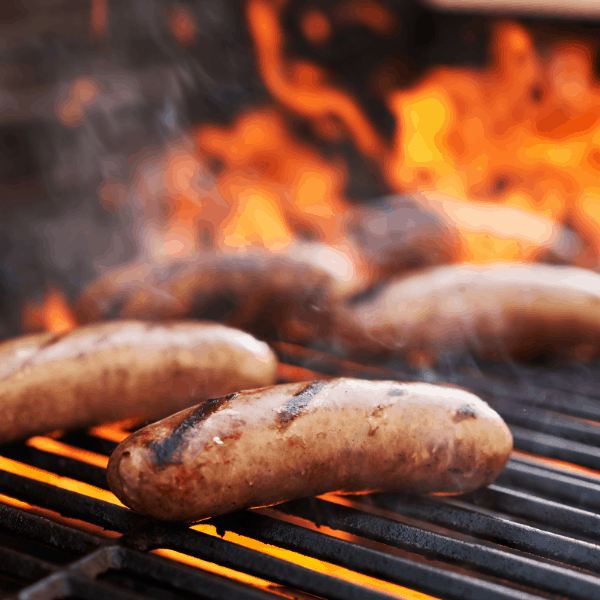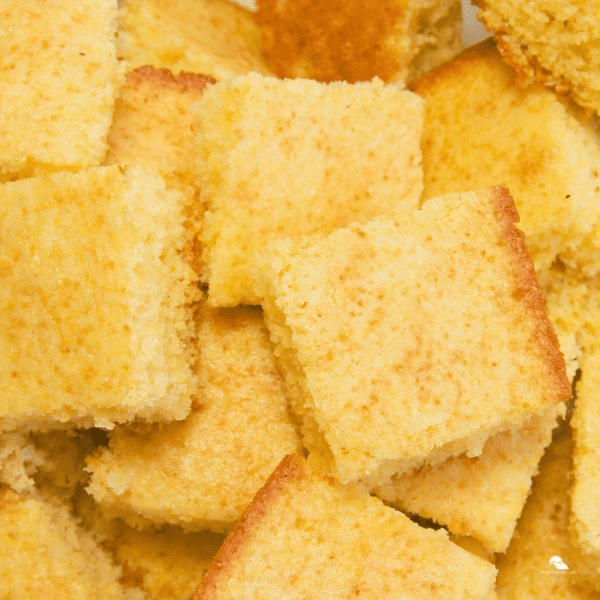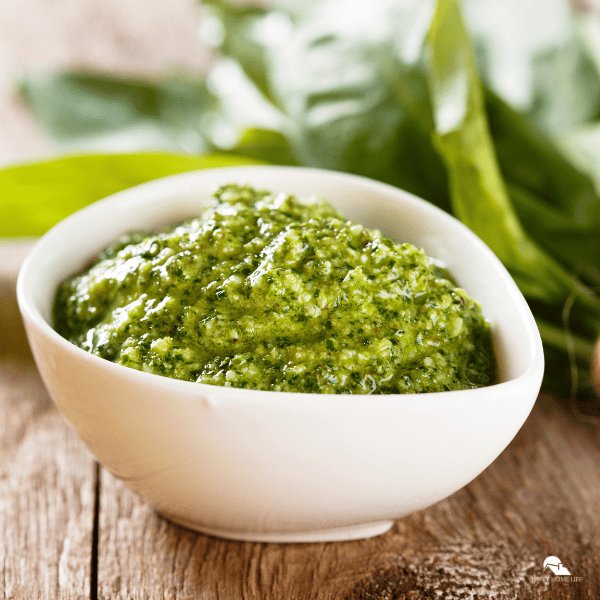When it comes to reheating gravy, many people have experienced the frustrating phenomenon of it becoming thin and watery. This can be quite disappointing, especially if you spent time and effort making a flavorful and thick gravy. But why does this happen?
When reheated, one potential cause of thinning gravy is the separation of fats and liquids. Gravy is typically made by combining fat, such as butter or drippings, with flour to create a roux.
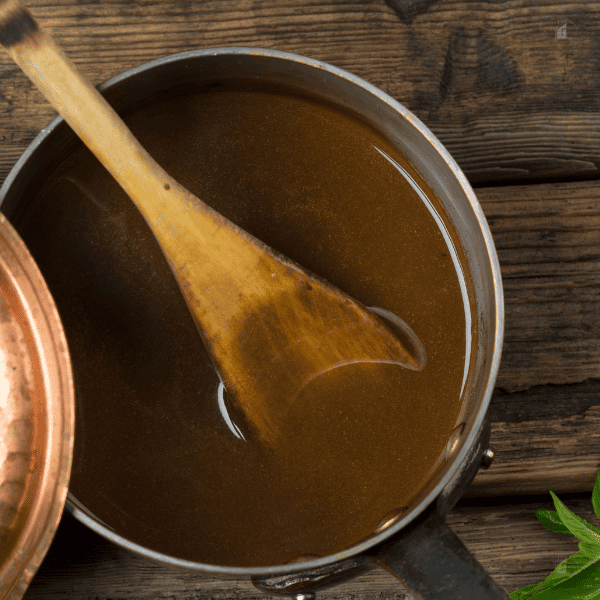
This roux is then mixed with stock or broth to thicken the gravy. However, when the gravy is refrigerated and reheated, the fats can separate from the liquids, resulting in a thinner consistency.
Another possible reason for thinning gravy is the evaporation of moisture during the reheating process. When you reheat gravy, either on the stovetop or in the microwave, the heat can cause some of the liquid to evaporate. This loss of moisture can contribute to a thinner texture.
Additionally, when reheated, the thickening agents used in the gravy, such as flour or cornstarch, may lose their thickening properties. These agents rely on heat to activate and thicken the liquid. So, when you reheat the gravy, the thickening agents may not work as effectively, resulting in a thinner consistency.
It’s worth noting that the type of gravy can also impact its consistency when reheated. Some gravies, like cream-based or milk-based, are more prone to thinning when heated due to the nature of dairy products. The proteins and fats in dairy can break down and separate when reheated, leading to a thinner gravy.
You can follow a few tips to prevent your gravy from becoming thin when reheated.
First, store your gravy in an airtight container to minimize evaporation and maintain its thickness. When reheating, do so gently and slowly to reduce the chance of fats separating from liquids.
You can also consider adding a bit of additional thickening agent, such as flour or cornstarch, to help maintain the desired consistency.
The thinning of gravy when reheated can be attributed to the separation of fats and liquids, evaporation of moisture, and potential loss of thickening properties in the reheating process. By understanding these causes and implementing proper storage and reheating techniques, you can help maintain the thickness of your gravy when enjoying it again.
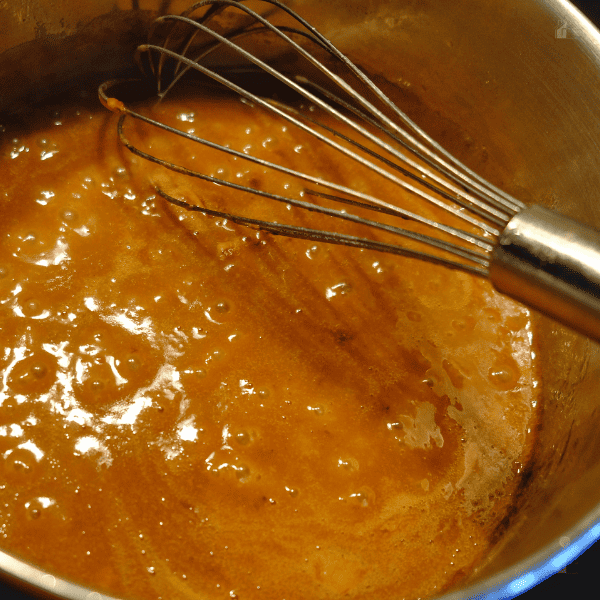
The Science Behind Thinning Gravy
The role of starch in gravy thickening
To understand why gravy tends to go thin when reheated, it’s important to delve into the role of starch in thickening gravies. Starch is commonly used as a thickening agent in gravy recipes. Starch granules absorb moisture and swell when heated, creating a gel-like consistency that gives the gravy its desired thickness.
The main challenge with reheating gravy lies in the structural changes that occur to the starch during the cooling and reheating process. When the gravy is chilled and then reheated, the starch gel network established during the initial cooking process can break down, resulting in a loss of thickening power. This breakdown can occur due to various factors, such as changes in temperature and moisture levels.
How reheating affects the starch structure
When the gravy is cooked, the starch granules absorb water and swell, forming a matrix that traps liquid and creates a thickened sauce. However, as the gravy cools, some water is released, causing the gel to weaken. When the gravy is reheated, the structural integrity of the starch network can further deteriorate.
The reheating process can cause the starch molecules to unravel and lose their ability to absorb and hold onto moisture. This leads to the gel structure’s breakdown and a subsequent gravy thinning. The longer the gravy is reheated or the higher the temperature, the more pronounced this thinning effect becomes.
To minimize the thinning of gravy when reheating, it is crucial to follow certain guidelines. Firstly, it is recommended to reheat the gravy gently and at a lower temperature. This helps to minimize the starch gel breakdown and the moisture evaporation.
Another strategy is adding a small amount of thickening agents, such as cornstarch or flour, before reheating. This can help compensate for any loss of thickening power in the starch caused by the reheating process.
In conclusion, the thinning of gravy when reheated can be attributed to the breakdown of the starch gel structure, evaporation of moisture, and potential loss of thickening properties.
By understanding these factors and following proper reheating techniques, such as gentle heating and the addition of thickening agents, it is possible to minimize the thinning effect and enjoy a consistently thick and flavorful gravy even after reheating.
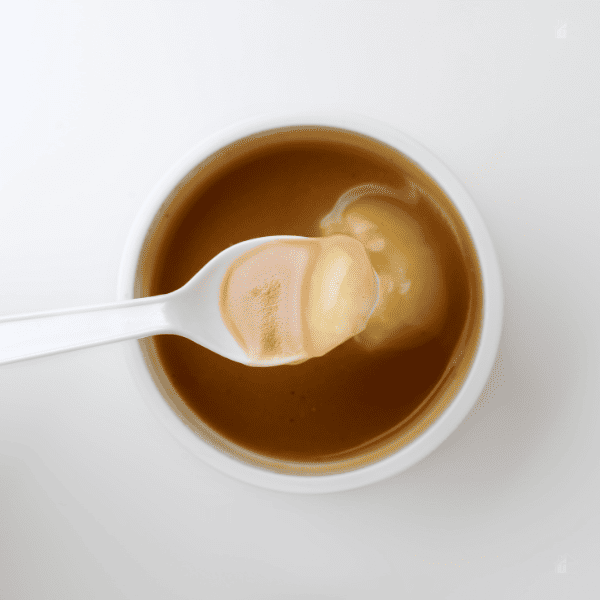
Factors Influencing Gravy Consistency When Reheated
Temperature variations during reheating
When it comes to reheating gravy, the temperature is crucial in determining its consistency. Heating gravy at high temperatures can cause the starch molecules to break down more rapidly, resulting in a thinner consistency.
To prevent this, it is recommended to reheat the gravy gently and at a lower temperature. This allows the starch molecules to retain their structure and maintain the desired thickness.
Additionally, sudden temperature changes can also affect the gel structure of the starch in the gravy. Rapid cooling followed by reheating can lead to the breakdown of the gel network, causing the gravy to become thinner. To minimize this, it is advisable to cool the gravy properly before refrigerating and slowly heat it when reheating.
The impact of time and duration
The length of time the gravy is reheated can also impact its consistency. Prolonged reheating can cause further breakdown of the starch gel, leading to thinner gravy. It is recommended to heat the gravy only until it reaches the desired temperature and avoid prolonged heating to preserve its thickness.
The initial cooking and reheating duration can also affect the gravy’s consistency. If the gravy is left in the refrigerator for an extended period, the starch gel might continue to break down, resulting in a thinner texture when reheated. To maintain the thickness, it is best to reheat the gravy within a reasonable time frame after it has been cooked.
Furthermore, excessive stirring during reheating can contribute to the thinning of gravy. Stirring vigorously can agitate the starch molecules, causing them to break down and lose their ability to thicken the gravy. It is recommended to gently stir the gravy or avoid stirring altogether during reheating.
To compensate for any potential loss of thickening power during reheating, you can consider adding a small amount of additional thickening agent, such as cornstarch or flour. This can help restore the desired thickness and consistency of the gravy.
Strategies to Prevent Gravy from Going Thin
Storing and reheating techniques
When it comes to reheating gravy, there are certain strategies you can employ to prevent it from going thin and maintain its desired consistency. Here are some tips:
- Gentle reheating: Avoid heating the gravy at high temperatures as this can cause the starch molecules to break down rapidly, resulting in a thinner consistency. Instead, reheat the gravy gently and at a lower temperature. This will allow the starch molecules to retain their structure and preserve the desired thickness.
- Avoid sudden temperature changes: Rapid cooling followed by reheating can affect the gel structure of the starch in the gravy, making it thinner. To minimize this, ensure that you properly cool the gravy before refrigerating it and then slowly heat it when reheating.
- Reheat only when necessary: The length of time the gravy is reheated can also impact its consistency. Prolonged reheating can cause further breakdown of the starch gel, resulting in thinner gravy. It is best to heat the gravy only until it reaches the desired temperature and avoid prolonged heating to maintain its thickness.
- Time frame for reheating: The duration between the initial cooking and reheating can also affect the gravy’s consistency. If the gravy is left in the refrigerator for an extended period, the starch gel might continue to break down, resulting in a thinner texture when reheated. To maintain thickness, reheat the gravy within a reasonable time frame after it has been initially cooked.
- Careful stirring: Excessive stirring during reheating can contribute to the thinning of gravy. Vigorous stirring can agitate the starch molecules, causing them to break down and lose their ability to thicken the gravy. It is recommended to gently stir the gravy or avoid stirring altogether during the reheating process.
Thickening agents and alternative solutions
If, despite your best efforts, the reheated gravy still turns out thin, there are several thickening agents and alternative solutions you can try:
- Cornstarch or flour: Adding a small amount of cornstarch or flour to the reheated gravy can help restore its thickness. Mix the thickening agent with a small amount of cold water or broth before adding it to the gravy. Cook the gravy for a few minutes after adding the thickening agent to allow it to thicken.
- Arrowroot: Arrowroot is another natural thickening agent that can be used as an alternative to cornstarch or flour. Mix it with a small amount of cold water before adding it to the reheated gravy. Cook the gravy for a few minutes to allow the arrowroot to thicken.
- Reducing the gravy: If the gravy is still too thin, you can try reducing it by simmering it over low heat. This will help evaporate some of the liquid and thicken the gravy.
- Add additional stock or broth: If the gravy is too thin, you can try adding a small amount of stock or broth to increase the overall volume and thickness of the gravy. Make sure to adjust the seasonings accordingly.
By implementing these strategies and using thickening agents or alternative solutions when necessary, you can prevent gravy from going thin when reheated and maintain a consistently thick and flavorful gravy every time.
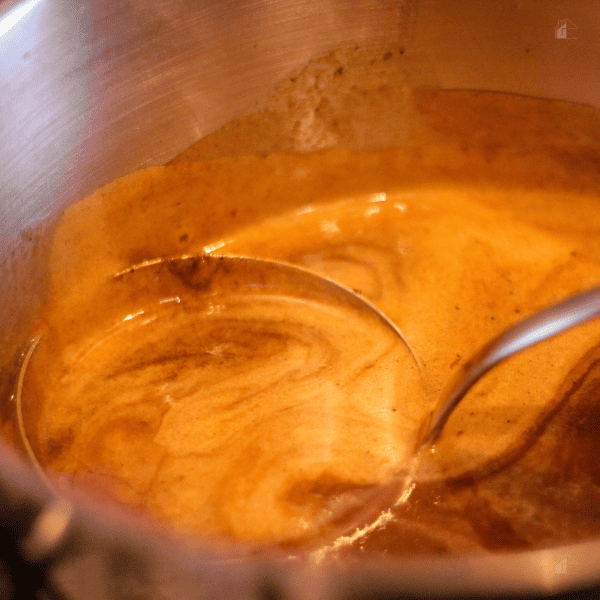
Popular Myths Debunked
Debunking the myth of condensation causing thin gravy
One common myth about reheating gravy is that condensation causes it to become thin. However, the truth is that condensation does not directly affect the thickness of the gravy. Condensation occurs when warm air comes into contact with a cooler surface, forming water droplets.
In the case of reheating gravy, condensation may form on the surface of the container or the lid, but it does not penetrate the gravy itself. Therefore, condensation is not responsible for making the gravy thin.
Dispelling misconceptions about gravy reheating
Several misconceptions surrounding the reheating of gravy need to be addressed. One common misconception is that reheating gravy multiple times can cause it to become thin.
While it is true that prolonged reheating can break down the starch and result in thinner gravy, reheating the gravy once or twice should not significantly impact its thickness.
Another misconception is that adding water or stock to reheated gravy will thicken it. However, this is not the most effective method. Water or stock dilutes the flavor of the gravy and may not provide the desired thickness. Instead, it is advisable to use thickening agents such as cornstarch, flour, or arrowroot, as mentioned earlier.
It is also important to note that reheating gravy for an extended period and at high temperatures can cause the starch molecules to break down rapidly, resulting in a thinner consistency. To maintain the desired thickness, it is recommended to reheat the gravy gently and at a lower temperature.
In conclusion, the thinning of gravy when reheated is not caused by condensation but rather by the breakdown of starch molecules. By debunking these myths and understanding the proper techniques for reheating gravy, you can ensure a consistently thick and flavorful result every time.
Reheating gravy and maintaining its consistency can be a tricky task if not done correctly. Understanding the science behind gravy thickening and debunking common myths can help ensure that your reheated gravy remains thick and delicious.

Tips for Maintaining Gravy Consistency when Reheating
To ensure that your reheated gravy retains its thickness, here are some tips to keep in mind:
- Reheat gently: Avoid overheating, as this can cause the breakdown of starch molecules and result in thin gravy. Reheat it slowly and at a lower temperature to maintain the desired consistency.
- Avoid excessive stirring: Stirring too vigorously can break down the starch molecules, leading to thinner gravy. Stir the gravy gently and sparingly during reheating.
- Use thickening agents: If your gravy does become thin after reheating, you can use thickening agents like cornstarch, flour, or arrowroot to restore its consistency. Mix the thickening agent with cold water or stock and then add it to the reheated gravy, constantly stirring until it thickens.
- Store properly: Proper storage of gravy can also contribute to maintaining its consistency. Place the cooled gravy in an airtight container and refrigerate promptly. When reheating, use a saucepan or microwave-safe dish and ensure thorough heating to eliminate any cold spots.
Final Thoughts on the Science of Gravy Thickening and Reheating
Understanding the science behind gravy thickening and the misconceptions surrounding reheating can help you achieve consistent, thickened gravy every time.
Remember that condensation does not directly cause thin gravy; instead, the breakdown of starch molecules affects its thickness. By following proper reheating techniques, such as gentle heating, minimal stirring, and using thickening agents if needed, you can maintain the desired consistency and enjoy flavorful reheated gravy.
So, the next time you have leftover gravy, don’t worry about it going thin. With these tips and an understanding of the science, you can confidently reheat and enjoy your delicious homemade gravy.


